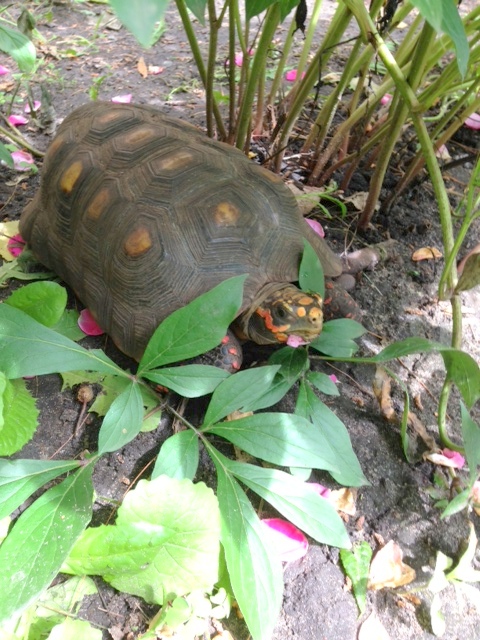Redfoot Tortoises and Marrow Bones
Here’s another tip for your Redfoot tortoise on keeping their beaks trimmed. We always feed our Redfoot tortoises on slates, the ones you can find at a Lowe’s or Home Depot for a buck or two for a 12 inch by 12 inch one.
Get one with a rough side to put the food on and as your Redfoot tortoise goes after the food items they hit up against the slate and it slowly files down their beak and keeps it from getting overgrown.
Redfoot tortoises and marrow bones. We have three dogs and feed them a raw diet, so they get fresh marrow bones a couple of times a week. Once they have reached the point of only having meat remnants left on the bone I take them away from the dogs and put them in our Redfoot tortoise pen.
Redfoot’s, being omnivorous to a small degree, will chew off the small pieces of meat left on the bone and, more importantly, chew the bone itself which like the slate helps to file down their beak.
You want to remove the marrow bone after a day as the smell can get noticeable.
Anyway, just another quick idea you can run with and use as you feel warranted for your Redfoot tortoise.
